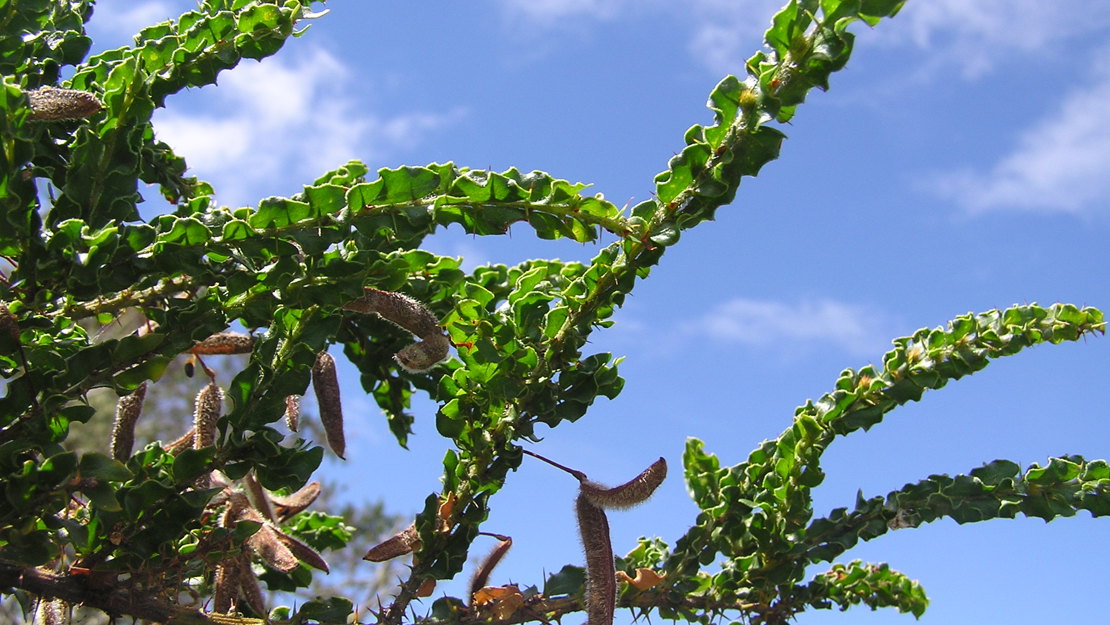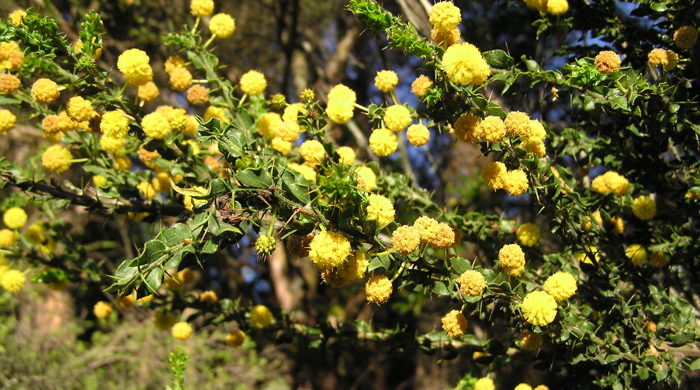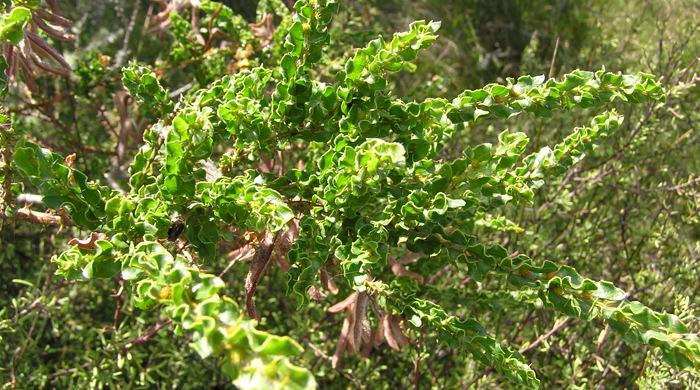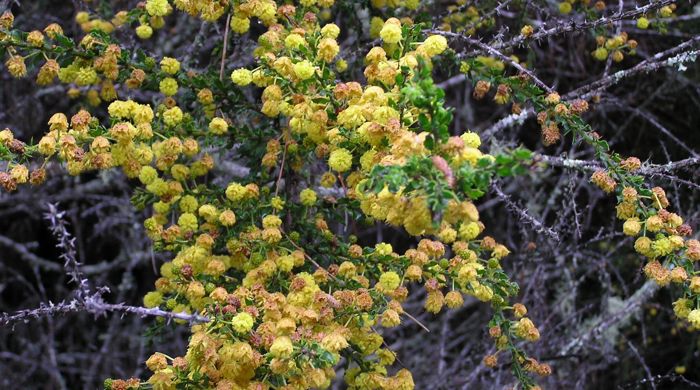Acacia paradoxa
Kangaroo acacia
Family: Fabaceae
Origin: Australia

Regional Pest Management Plan (RPMP) status
- Aotea — Progressive containment
- Whole region — Sustained control
- Hauraki Gulf Controlled Area Notice pest
General description
Perennial shrub < 3 m tall. Leaves are < 18 x 8 mm and reduced to phyllodes. Spines are stiff and < 1 cm long. Flowers are yellow and borne in inflorescences in July – October. Seedpods are < 60 x 4 mm.
What you need to know
To help protect our environment:
- You must not breed, distribute, release or sell kangaroo acacia within the Auckland region.
- You must not plant kangaroo acacia within the Auckland region, unless you are transferring an existing plant on your land to another location within the boundaries of the same property.
- You must destroy any kangaroo acacia on land that you occupy if it has been planted in breach of the above rules and you are directed to do so by an authorised person.
Auckland Council will manage kangaroo acacia at all sites within the Aotea/Great Barrier Island group where it is known to occur.
If you see kangaroo acacia anywhere on Aotea/Great Barrier Island group, please report it to Auckland Council at pestfree@aucklandcouncil.govt.nz.
Habitats
Open or disturbed sites, roadsides, farms, scrubland, banks, coastal areas, forest margins, wastelands.
Dispersal
Seeds dispersed by gravity, pods possibly dispersed by water movement. Human-mediated dispersal through deliberate plantings.
Impact on environment
Forms dense stands, potentially excluding native vegetation. Nitrogen fixer. May alter soil fertility, nutrient cycling dynamics and plant community compositions.
Control
Site Management
Follow up treated areas 3 times per year. Encourage natural regeneration of native plants or replant treated areas where possible after 2-3 treatments to establish dense ground cover and minimise reinvasion.
Recommended approaches
Do not attempt to undertake control of this species on Aotea/Great Barrier Island group. Please report to Auckland Council if seen on Aotea/Great Barrier Island group.
Physical control
Method: Dig out.
Plant parts requiring disposal: Seeds.
Disposal options: Remove to greenwaste or landfill if practical.
Biocontrol
Biocontrol is currently not available for this species.
Community agrichemical control recommendations
No qualifications: Cut stump and paste freshly cut base of stems with metsulfuron gel.
Large stems can be frilled and pasted with metsulfuron gel.
Basic Growsafe certified: Cut stump and spray freshly cut base of stems with 5g metsulfuron-methyl per 1L of water.
Certified Handler/Experienced agrichemical user: Foliar spray with 5g metsulfuron-methyl per 10L of water and 20ml penetrant.
Safety notes
Plant has spines.
Caution: When using any herbicide or pesticide please read the label thoroughly to ensure that all instructions and safety requirements are followed.






